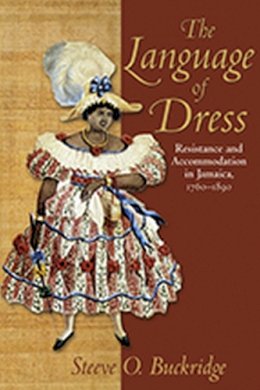
Stock image for illustration purposes only - book cover, edition or condition may vary.
The Language of Dress: Resistance and Accommodation in Jamaica, 1750-1890
Steeve O. Buckridge
€ 50.29
FREE Delivery in Ireland
Description for The Language of Dress: Resistance and Accommodation in Jamaica, 1750-1890
Paperback. his book is a study of how African slave and freed women used their fashion and style of dressing as a symbol of resistance to slavery and accommodation to white culture in pre and post-emancipation society. Africans brought aspects of their culture such as folklore, music, language, religion and dress with them to the Americas. Num Pages: 250 pages, Illustrations, ports. BIC Classification: 1KJWJ; HBJK; HBTS; JFCK; JFSJ1. Category: (P) Professional & Vocational; (UP) Postgraduate, Research & Scholarly; (UU) Undergraduate. Dimension: 229 x 152 x 22. Weight in Grams: 494.
This book is a study of how African slave and freed women used their fashion and style of dressing as a symbol of resistance to slavery and accommodation to white culture in pre and post-emancipation society. Africans brought aspects of their culture such as folklore, music, language, religion and dress with them to the Americas. The African cultural features were...
Read moreProduct Details
Format
Paperback
Publication date
2009
Publisher
University of the West Indies Press
Condition
New
Number of Pages
290
Place of Publication
Kingston, Jamaica
ISBN
9789766401436
SKU
V9789766401436
Shipping Time
Usually ships in 7 to 11 working days
Ref
99-1
About Steeve O. Buckridge
Steeve O. Buckridge is Assistant Professor of History, Department of History, Grand Valley State University.
Reviews for The Language of Dress: Resistance and Accommodation in Jamaica, 1750-1890
"An excellent study that focuses on an essential aspect of Jamaican material culture and cultural/social history.... It gives voice, agency, identity and space to colonized women."-Professor Verene Shepherd, University of the West Indies, Jamaica; "The author has made extensive use of the available secondary material and has made extensive use of interviews in Jamaica and on the African continent itself....
Read more